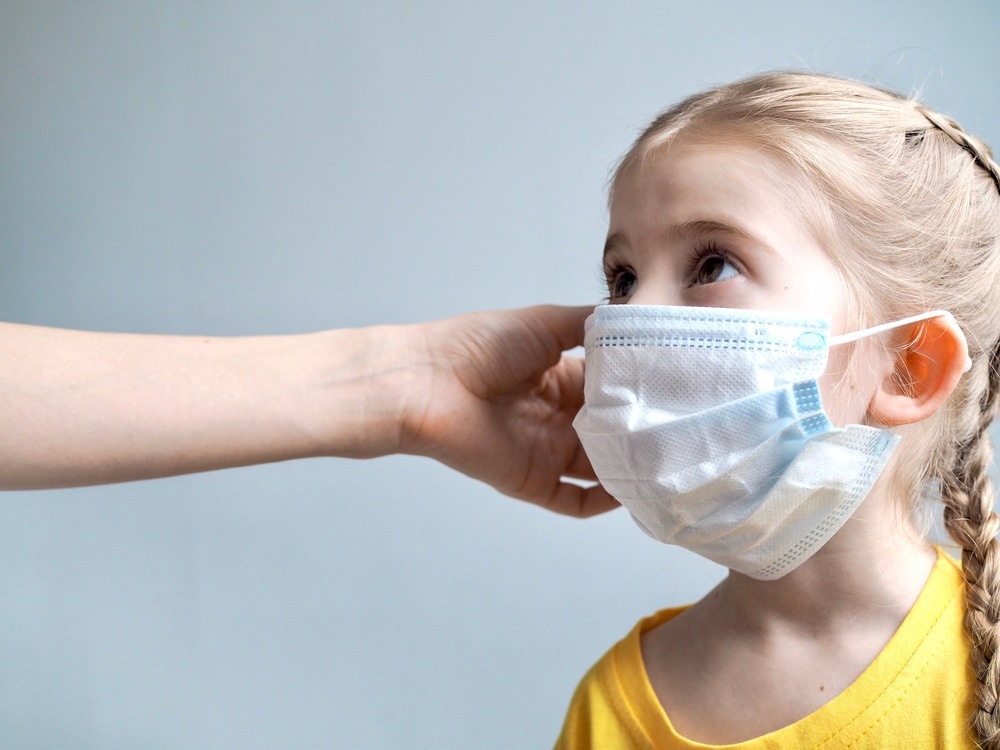In a recent study published in Nature Communications, researchers compared seropositive and seronegative children between the ages of six months and 17 years to assess the risk factors and prevalence of persistent symptoms of post-coronavirus disease (COVID) syndrome.
 Study: A population-based serological study of post-COVID syndrome prevalence and risk factors in children and adolescents. Image Credit: Alyona Shu/Shutterstock
Study: A population-based serological study of post-COVID syndrome prevalence and risk factors in children and adolescents. Image Credit: Alyona Shu/Shutterstock
Background
While long COVID symptoms and mechanisms have been extensively investigated in adult populations, the information on the prevalence and diagnosis of long COVID or post-COVID syndrome in pediatric populations remains unclear. The dearth of information on pediatric post-COVID syndrome can partly be explained by methodological challenges, such as the absence of an official standardized definition for the occurrence of long COVID-like symptoms among children until now.
Some studies that reported a higher prevalence of post-COVID symptoms in children did not include a control group, which is problematic since persistent symptoms from other viral infections could lead to an overestimation of the prevalence of post-COVID symptoms.
Additionally, the use of samples with confirmed reverse transcription polymerase chain reaction (RT-PCR) tests for severe acute respiratory syndrome coronavirus 2 (SARS-CoV-2) excludes asymptomatic cases, resulting in an underestimation of the infected population.
The prevalence of post-COVID symptoms in the pediatric population needs to be explored from a serological perspective using a non-infected control cohort to form a standardized diagnosis of the syndrome.
About the study
In the present study, the researchers used data from an ongoing, prospective cohort study called SEROCoV-KIDS in Geneva, Switzerland, which longitudinally evaluates the health and development-related impacts of the coronavirus disease 2019 (COVID-19) pandemic in children and adolescents.
Baseline assessment included collecting blood samples to test for antibodies against SARS-CoV-2 nucleoprotein and an online questionnaire filled out by the parent or legal guardian, which evaluated the health and development of the parents and children. The data also included information on sociodemographic factors such as sex, age, household financial status, and education level of the parents.
The baseline data comprised information on symptoms in children lasting a minimum of four weeks, irrespective of the SARS-CoV-2 infection status. The data were then classified into different groups based on duration and types, including general, cardiovascular, respiratory, neurological, gastrointestinal, dermatological, or musculoskeletal. The severity of the symptoms was also assessed based on their impact on the child’s daily life.
SARS-CoV-2 infections and seropositivity were measured using RT-PCR tests and serological assays. Anti-nucleoprotein antibodies were chosen to differentiate between the immune responses elicited by infections and those elicited by vaccination since the approved vaccines during the study period comprised messenger ribonucleic acid (mRNA) vaccines that generated only anti-spike protein antibodies.
Results
The results suggested that a significant number of pediatric patients suffered from persistent post-COVID syndrome symptoms, with the age-stratified analysis indicating adolescents to be at substantial risk. Age, underlying chronic health conditions such as asthma, and lower socioeconomic status were important post-COVID syndrome risk factors.
Including asymptomatic or mildly symptomatic COVID-19 cases resulted in a lower estimation of post-COVID syndrome prevalence compared to other studies that only analyzed positive RT-PCR samples. The lower prevalence could also be explained by recent SARS-CoV-2 infections that have not yet resulted in the manifestation of long-term symptoms.
Predominant post-COVID symptoms included abdominal pain, anosmia, difficulty concentrating, muscle pain, headaches, difficulty breathing, and constipation, with seropositive children experiencing higher severity of symptoms. Furthermore, the increased likelihood of children from a lower socioeconomic background experiencing post-COVID symptoms indicates higher susceptibility to SARS-CoV-2, higher incidence of comorbidities, and unequal vaccine uptake based on socioeconomic status.
While the results already indicate a higher prevalence of post-COVID symptoms in adolescents, the authors expect the value to be higher in reality since adolescents are generally less forthcoming to their parents about their health concerns. The high prevalence of post-COVID symptoms among adolescents is concerning since it could exacerbate the already detrimental impacts of the COVID-19 pandemic on the mental and physical health and social life of adolescents.
The use of serological data in the assessment and the addition of mild and asymptomatic cases, as well as a non-infected control group, were some of the study's strengths. Using serological tests circumvented the parental bias that could occur while reporting persistent symptoms. At the same time, the parent-reported questionnaire was also a limitation since the answers could have been influenced by their own experiences.
Conclusions
Overall, the results indicated that a significant proportion of the pediatric seropositive population experienced persistent post-COVID symptoms. The adolescent population is at an increased risk of developing post-COVID syndrome, with socioeconomic status and chronic health conditions being other risk factors.
While further research is required for a between understanding of post-COVID syndrome in children, the results highlighted the need to develop strategies for detecting and managing these symptoms in children.